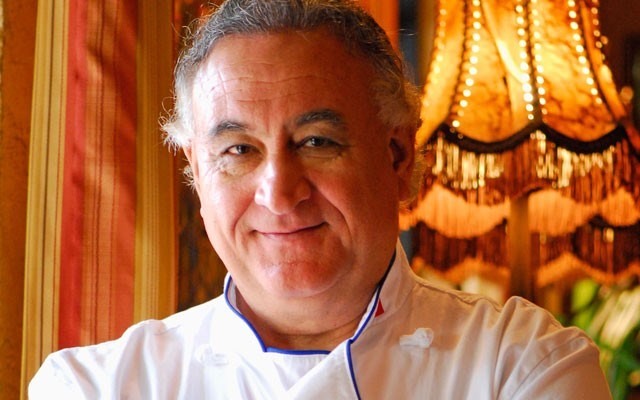Back in 1981 when there wasn't much of anything in Whistler Village, chef Umberto Menghi saw the vision and understood the potential of the mountain town.
He opened Il Caminetto in the heart of the tiny village. A little more than three decades later, when many have buckled under the pressure and closed their high-end eateries in Whistler, Menghi is still going strong – with two very popular Tuscan restaurants within shouting distance of each other.
"I started in Whistler – was one of the first restaurants when there was just a building where you were coming in – there was nothing else around. And, the square came right after," he says, his words spiced with his Italian accent.
Menghi arrived in Vancouver in 1968 and quickly saw that Vancouver lacked something almost every major city has – a resort destination within a two-hour drive. He says Montreal has the Laurentian Mountains and Toronto has the lakes in cottage country. Vancouver had no such destination at that time when he was an ambitious young chef.
"When they talked about doing Whistler, I said, 'Boy this is going to be fantastic.' With a ski resort, the way it was planned, this was going to be international," Menghi recalls, chatting on his mobile phone in Vancouver in between appointments, as he works toward opening a new Vancouver restaurant.
The first time he opened a restaurant in the city it was with a group of investors. That first restaurant, called Casanova, was followed by a venture he launched all on his own. He hasn't looked back.
After three successful years operating Il Caminetto, during the recession in the early '80s, Menghi was so confident about Whistler's future he opened a second restaurant, called Trattoria.
A few years after opening the Tratt, he opened a third Whistler location in Creekside in the space now occupied by Creekbread.
"It didn't work too well because there was nobody down there," says Menghi.
To be one of Canada's most successful restaurateurs there has to be some failures; mistakes make an entrepreneur stronger.
At the peak of his restaurant career Menghi had 12 restaurants between Whistler and San Francisco.
"I've seen a lot of changes," says Menghi.
One thing that hasn't changed is his commitment to the food found in the Tuscan region of Italy.
"I'm Italian, so I make Italian food and that's what I represent," Menghi says.
At his restaurants you will find classic Italian dishes. There are no Asian fusion experiments or exotic international combinations. The food they eat in Tuscany is the food Menghi prepares and shares with his clientele. Tuscan food is also featured in the five cookbooks he has published.
His next project is the launch of a new Il Giardino in Vancouver. About a year ago, he decided to drop out of the Vancouver restaurant scene for some time. He sold his Vancouver space. Now he's ready to get back into the game in the city.
"I took one year off and now I'm building a new one – a new Giardino," says Menghi.
While that is happening he'll continue to enjoy a home he recently built in Whistler for use during his frequent visits.
"I do love Whistler," he says.
He lives mainly in Vancouver when he isn't enjoying holidays in Hawaii or working as a guest chef on a cruise ship.
From publishing cookbooks to operating restaurants as far off as Seattle and San Francisco, Menghi is a man of vast experience. He modestly mentions there was a time until just recently that he ran a cooking school in Tuscany.
"I dream all the time," he says when asked if he as any expansion plans in Whistler. He adds that he doesn't have any plans to sell either of his two Whistler restaurants. Menghi adds, however, that his father once told him to always give it some thought if somebody wants something you have... if they're willing to pay for it.
Fettuccine Frutti Di Mare
Serves two as a main course or four as an appetizer. This is one of the most consumed pastas on the Italian coastline.
Ingredients
125 g imported fettuccine
15 ml unsalted butter
15 ml olive oil
2 shallots, peeled and finely diced
2 small carrots, peeled and chopped
1 stalk celery, coarsely chopped
4 garlic cloves, diced
5 ml minced fresh thyme
Salt and freshly ground pepper
125 ml dry white wine
250 ml chopped tomatoes (you can substitute with canned, if needed)
4 small sea scallops or 2 large, cut into quarters
4 medium-size shrimp, peeled and deveined
4 large mussels, beards removed and scrubbed
4 to 6 large clams, scrubbed
2 small calamari, cleaned and cut into long strips or rings
4 dashes Tabasco sauce
250 ml warm water
Method
Boil fettuccine in a large pot of salted water until al dente. Drain and rinse under cold running water to stop the cooking. Drain again and toss with a little oil to prevent sticking. Set aside.
Combine butter and oil in a large heavy skillet. Add shallots, carrots, celery, garlic and minced thyme. Sauté for two minutes. Add salt and pepper to taste. Add wine and tomatoes and cook for two more minutes or until it begins to bubble. Add all the seafood, discarding any mussels or clams that may have already opened.
Season with salt and pepper.
Add Tabasco and water. Bring to a boil. Cover and cook for about two minutes or until mussels and clams have opened.
Discard any mussels or clams that do not open.
Using a slotted spoon remove seafood to a heated bowl. Reduce remaining liquid in the skillet for two more minutes. Add cooked fettuccine to hot sauce and gently toss until sauce is absorbed by the pasta. Transfer fettuccine to a large heated serving platter or bowl and spoon the cooked seafood over top.
Serve immediately.




